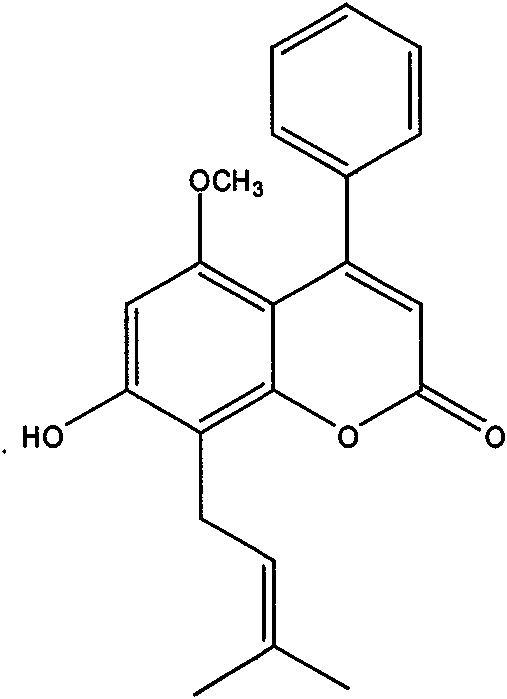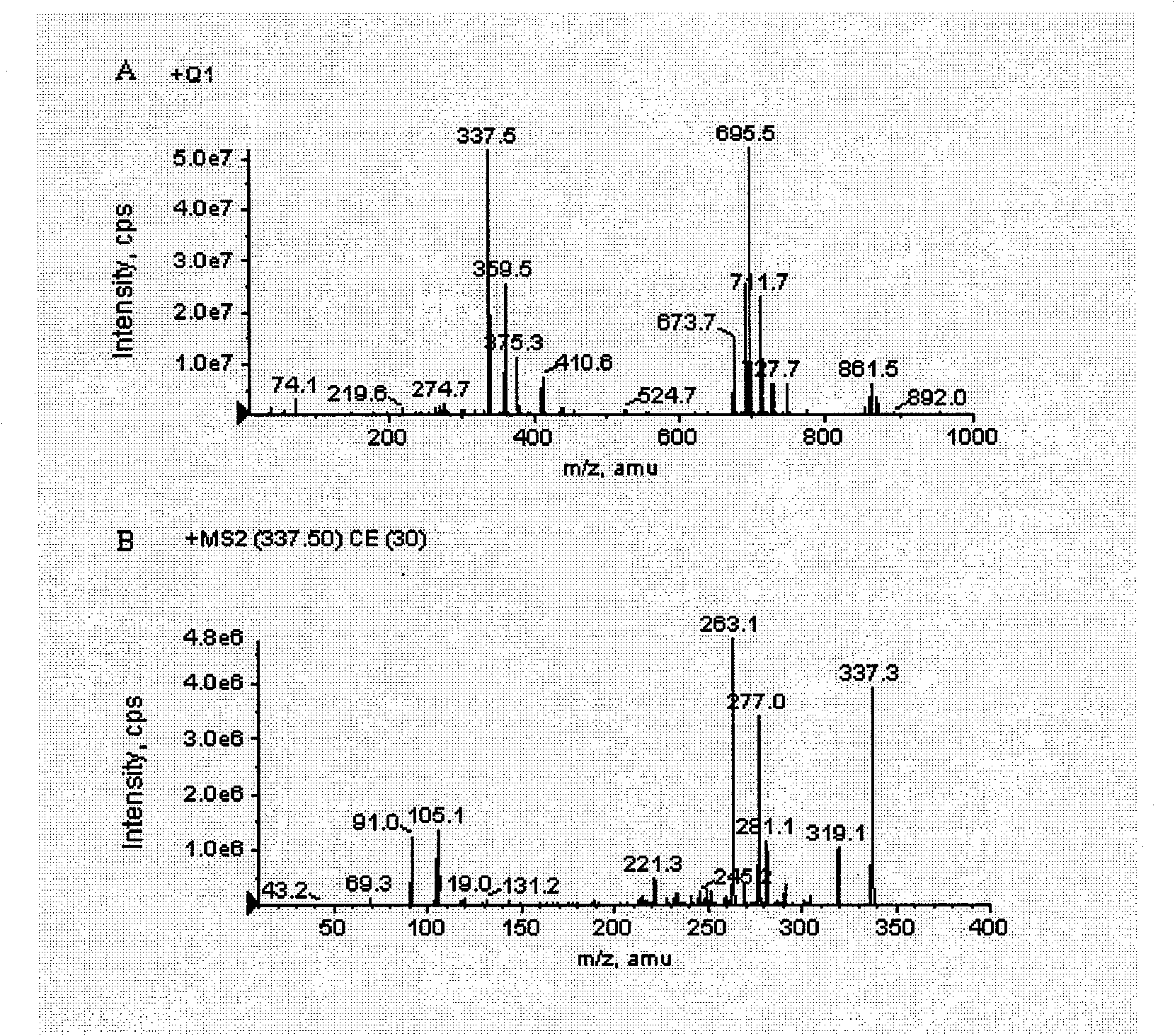New coumarin active content, preparation method and application thereof
A technology of coumarins and biologically active ingredients is applied to a new field of coumarin-based active ingredients and their preparation and application, which can solve the problem that the research on compounds, active ingredients, and the mechanism of action is not clear enough, which affects further applications. And other issues
- Summary
- Abstract
- Description
- Claims
- Application Information
AI Technical Summary
Problems solved by technology
Method used
Image
Examples
Embodiment 1
[0038] Example 1. Isolation of novel coumarin-like active compounds in pigeon pea leaves
[0039] Weigh 5 kg of dried branches and leaves of pigeon pea and extract 3 times with 80% supercritical CO2 for 2 hours each time. After the extract is concentrated, add it to 40°C warm water (4L), vibrate and flocculate for 30min under the condition of 50KHz in an ultrasonic extractor, stand still for 30min, take the floc, add it with 2 times the volume of quartz sand and stir it into a glass column, then Add 8 / 1 (v / v) chloroform-water with a sample amount of 12mL / g, pass air at a flow rate of 0.25L / min, continue for 30min, after static stratification, recover the organic solvent to obtain the crude product of the target. Dissolve a small amount of methanol, add an equal mass of chromatographic silica gel with a mesh number of 300-400, mix well, and evaporate to dryness under reduced pressure at 40°C. Weigh 300-400 mesh silica gel with 4 times the mass of the extract in advance, use pe...
Embodiment 2
[0040] Example 2. DPPH free radical scavenging activity test
[0041] Add 100 μl of the sample solution to be tested and 3.5 ml of DPPH solution into the test tube, keep in a constant temperature water bath at 30°C for 20 min, take out and measure its absorbance at 520 nm, and use a blank solvent as a control. 5 concentrations were made for each sample, and 3 parallels were made for each concentration, and ascorbic acid was used as a positive control. Statistical processing of experimental results to calculate IC of radical scavenging activity 50 value.
Embodiment 3
[0042] Example 3. Antioxidant activity test of beta-carotene-linoleic acid
[0043] Add 100μl of the sample solution to be tested and 4.9ml of β-carotene-linoleic acid emulsion to the test tube, use the solvent as a blank control, and measure its absorbance at 470nm, which is the value at 0min, prepare a 50°C constant temperature water bath, and measure it well The absorbance at 0min immediately poured the test solution back into the test tube and put it into the water bath, and measured it every 15min until the β-carotene in the blank control tube faded, and the BHT solution was used as the positive control. Do 5 concentrations for each sample, and do 4 replicates for each concentration. Calculation of Antioxidant Activity IC 50 value. Table 2 shows the results of antioxidant activity in vitro.
[0044] Table 2 Pigalactone antioxidant activity IC 50
[0045]
PUM
 Login to View More
Login to View More Abstract
Description
Claims
Application Information
 Login to View More
Login to View More - R&D
- Intellectual Property
- Life Sciences
- Materials
- Tech Scout
- Unparalleled Data Quality
- Higher Quality Content
- 60% Fewer Hallucinations
Browse by: Latest US Patents, China's latest patents, Technical Efficacy Thesaurus, Application Domain, Technology Topic, Popular Technical Reports.
© 2025 PatSnap. All rights reserved.Legal|Privacy policy|Modern Slavery Act Transparency Statement|Sitemap|About US| Contact US: help@patsnap.com



